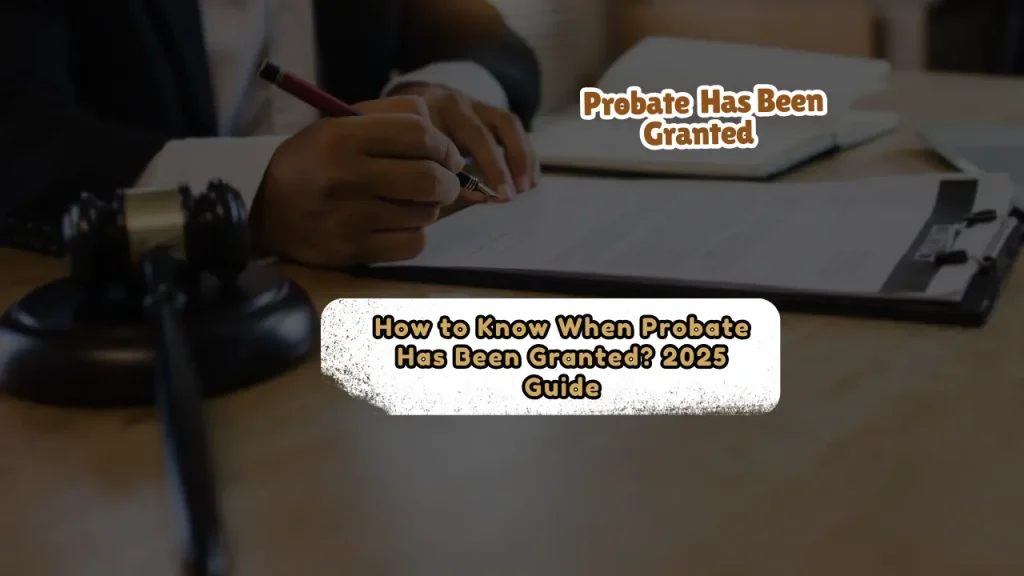How to Know When Probate Has Been Granted? 2025 Guide
Probate is the legal process that validates a will, settles debts, and transfers assets after someone’s death. Knowing whether probate has been granted is critical for heirs, creditors, and beneficiaries to assert their rights. Here’s how to determine if probate has been approved, with insights tailored to U.S. jurisdictions.
Table of Contents
The Probate Process: A Quick Overview
Understanding when probate is granted starts with knowing the basic steps:
- Filing a Petition: The executor files a petition with the probate court (e.g., in California under Probate Code §8000).
- Notifying Parties: Beneficiaries, heirs, and creditors are informed (often via newspaper notices like The Miami Herald in Florida).
- Inventory & Appraisal: Assets are listed and valued (e.g., real estate appraisals in Texas).
- Paying Debts: Estate funds settle debts and taxes (IRS Form 1041 for federal taxes).
- Distributing Assets: Remaining assets go to heirs per the will or state law.
- Closing the Estate: The court approves final accounts and closes the case.
The grant of probate (or letters of administration if there’s no will) is the court’s official approval authorizing the executor to act.
How to Know When Probate Has Been Granted
1. Notification from the Executor or Attorney
Executors must notify beneficiaries and creditors once probate is granted. If you’re a named heir or creditor, expect:
- A formal letter or email with a copy of the grant.
- Details about asset distribution timelines (e.g., 6–12 months in New York).
Example: In California, executors must notify heirs within 30 days of probate approval (Probate Code §1215).
2. Check Public Court Records
Probate grants are public documents. Access them by:
- Visiting the Court: Bring the deceased’s name and death date to the county probate clerk (e.g., Los Angeles Superior Court).
- Online Portals:
- California: CA Courts Online
- Florida: Florida Courts E-Filing Portal
- Texas: County-specific sites like Harris County Clerk
Tip: Fees for copies range from 5–20.
3. Search Probate Registries
Some states centralize records:
- Illinois: IL Probate Courts
- Ohio: Supreme Court Probate Division
For Non-U.S. Jurisdictions:
- UK: GOV.UK Probate Search
- Australia: NSW Online Registry
4. Monitor Newspaper Notices
Executors often publish probate grants in local papers:
- Texas: Houston Chronicle under Estates Code §308.051.
- New York: Court-designated papers like The New York Post.
Related article for you:
Where Are Probate Notices Published? Guide for All 50 US States & Jurisdictions

How Long Does It Take?
| Factor | Impact on Timeline | Example States |
| Estate Complexity | 6 months–2 years | CA (large estates), FL (real estate-heavy) |
| Disputes | 1–5+ years | Contested wills in IL or PA |
| Court Backlogs | Adds 3–12 months | Los Angeles, NYC, Miami |
The grant of probate is typically issued within 2–6 months of filing, but full closure takes longer.
How to Check Probate Status
- Online Tools:
- California: LA Superior Court Case Search
- Florida: Miami-Dade Probate Records
- Call the Court Clerk: Provide the deceased’s full name and filing date.
- Hire an Attorney: For contested estates, lawyers can expedite updates (e.g., in Texas under Estates Code §152.001).
When Probate Isn’t Needed
Probate is bypassed if:
- Small Estates: Under 184,500(CA),75k (FL), or $100k (IL).
- Trusts: Assets in living trusts transfer directly.
- Joint Ownership: Property with “right of survivorship” (e.g., spouses in TX).
Example: A $50k bank account in Ohio skips probate via a payable-on-death designation.
State-by-State Probate Grant Timelines
| State | Avg. Time for Grant | Key Resource |
| CA | 3–6 months | CA Courts Online |
| TX | 2–4 months | County clerk offices (e.g., Harris, Dallas) |
| FL | 4–8 months | FL Courts E-Filing |
| NY | 5–9 months | NYC Probate Courts |
Final Checklist
- Confirm Filing County: Where the deceased lived or owned property.
- Gather Details: Full name, death date, and last address.
- Check Court Records: Online portals or in-person visits.
- Follow Up: Monthly updates if delays occur.
Red Flag: No record after 6 months? The estate may be exempt or mishandled—consult an attorney.
About the Author

Sarah Klein, JD, is an experienced estate planning attorney who has helped clients with wills, trusts, powers of attorney, and probate matters. At All About Lawyer, she simplifies complex estate laws so families can protect their assets, plan ahead, and avoid legal headaches during life’s most sensitive moments.
Read more about Sarah
